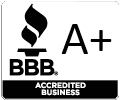
The profit per unit formula is the profit from a single unit of a product or service. You need to subtract the total cost of producing one unit from the selling price. For example, if you sell a product for $50 and it costs you $30 to produce, your profit per unit would be $20. As a small business owner, you’re likely always looking for ways to boost your income. Whether that’s by increasing sales, eliminating redundancies, or decreasing expenses, you should be looking for the next big cost-saving measure to free up valuable cash flow. At Bench, we do your bookkeeping and generate monthly financial statements for you.
How To Calculate Gross Profit
- That’s because accountants used to record a net loss in red ink, and net income in black ink.
- Once a company derives its operating profit, it then assesses all non-operating expenses, such as interest, depreciation, amortization, and taxes.
- You’ll also want to track the number of leads you generate from your marketing strategy.
- The 2 metrics are different, but both are valuable in assessing a company’s ability to generate profit.
- From the following ledger balances extracted from the books of Mr. Bharath, prepare a profit and loss account as on March 31, 2024.
Economic profit is more of a theoretical calculation based on alternative actions that could have been taken. Accounting profit, on the other hand, calculates what actually occurred and the measurable results for the period. This process gets much easier if you have accounting software like QuickBooks that makes financial reporting easier.
Financial Controller: Overview, Qualification, Role, and Responsibilities

The three types of profits that are often confused with accounting profit are cash profit, economic profit, and taxable profit. Most businesses choose to calculate gross profit as part of their https://www.bookstime.com/ quarterly accounting. This helps track changes in profit so companies can adjust accordingly. Smaller businesses may choose to calculate gross profit monthly so they can adapt more quickly.
Types of Profit Margins
In other words, the accounting profit also consists of accrued expenses. On the other hand, explicit expenses consist of all the expenses of the business from its accounting system. For this formula, revenues consist of all a business’s income from its operations. These may include material, labor, production overhead, sales, marketing, and administrative expenses, among many others.
Accounting Profit vs Economic Profit
By analyzing these numbers, you can identify areas of waste, like over-ordering supplies or paying for an expensive tool that you don’t use very often. Understanding your cash flow will help you spot places where you can spend funds more efficiently and decide when to scale down (or scale up) certain aspects of the business. From knowing your bottom line to monitoring cash flow, here’s how to ensure your business maintains a sound financial position. Does your business regularly buy and use the same supplies over and over? These could be for daily operations, to make goods, or even to ship products to customers. Whatever your regular supplies are, don’t just buy them when you need them.

How to calculate accounting profit
- We’ll explore the formula for calculating gross profit and how gross profit compares to profit margin.
- 11 Financial is a registered investment adviser located in Lufkin, Texas.
- Explicit expenses are the opposite of implicit expenses, which consist of costs that are not a part of the accounting system of a business and mainly refer to opportunity costs.
- ABC Co. must first calculate its total explicit expenses to calculate its accounting profit.
- In that case, you likely already have a profit and loss statement or income statement that shows your net income.
- Tracked as a percentage or absolute amount, it gives you insight into how much the business has grown and helps you determine future potential.
Another key performance metric to track is how often your audience sees and interacts with your content, also known as the engagement rate. This includes the number of people who like, comment, or share a social media post. An Adobe study found that seven in 10 customers are more likely to buy products from brands they know and trust. Knowing how customers engage with accounting profit formula your products and what motivates your target audience can help you build better campaigns to keep them coming back for more. Research shows about 20–33% of small businesses fail within the first two years, and close to 50% fail within the first five years. To be one of the success stories, it’s essential to know what’s happening at every level of your business.
- Implicit costs are the money a company loses by using an asset it owns instead of selling or renting it to customers.
- Thus, Microsoft Inc. has earned a profit from operating income of $9,687 million for the given period and $10,028 million of profit attributable to shareholders.
- These could be for daily operations, to make goods, or even to ship products to customers.
- While bifurcating the expense, one has to keep in mind whether the expense is directly related to operations or not.
- Accounting profit, also referred to as financial profit or bookkeeping profit, is a company’s net income, or total revenue minus explicit costs.
- Profit is a crucial metric for measuring the health and performance of a company.
Net income or net profit is calculated by charging all operating expenses and by considering other incomes earned in the form of commission, interest, rent, discounts, and fees. The accounting equation states that a company’s total assets are equal to the sum of its liabilities and its shareholders’ equity. It is calculated by dividing the profit by the cost and multiplying the result by 100 to express it as a percentage. This ratio helps assess the profitability of a business relative to its costs and is commonly used to evaluate financial performance and efficiency. Now, ABC Co. can also calculate its accounting profit using the above mentioned formula. ABC Co. must first calculate its total explicit expenses to calculate its accounting profit.

Profit Formula Vs Revenue
- Underlying profit is accounting profit with one-time payments subtracted or expenses added.
- Another term you might come across when researching accounting profit is economic profit.
- It measures how well a company is covering its basic production costs and generating a profit.
- No matter what type of business you run, taking more time costs more money.
- Implicit expenses are subjective because businesses make judgments to calculate them.
- It includes operating expenses (also known as Selling, General, and Administrative (SG&A) expenses) which are any costs a company generates that don’t relate to production.
Profit is a widely monitored financial metric that is regularly used to evaluate the health of a company.






Post a Comment